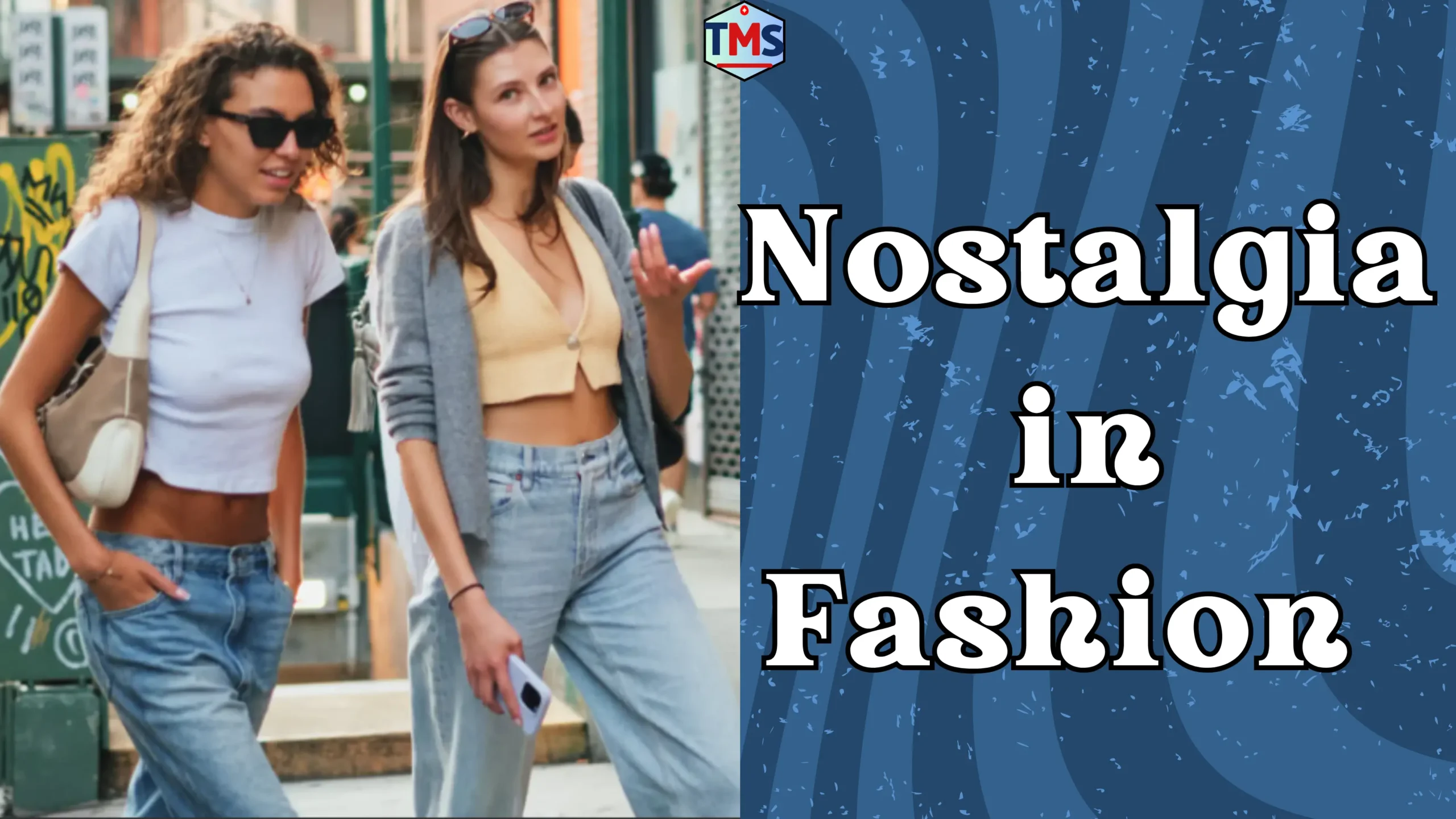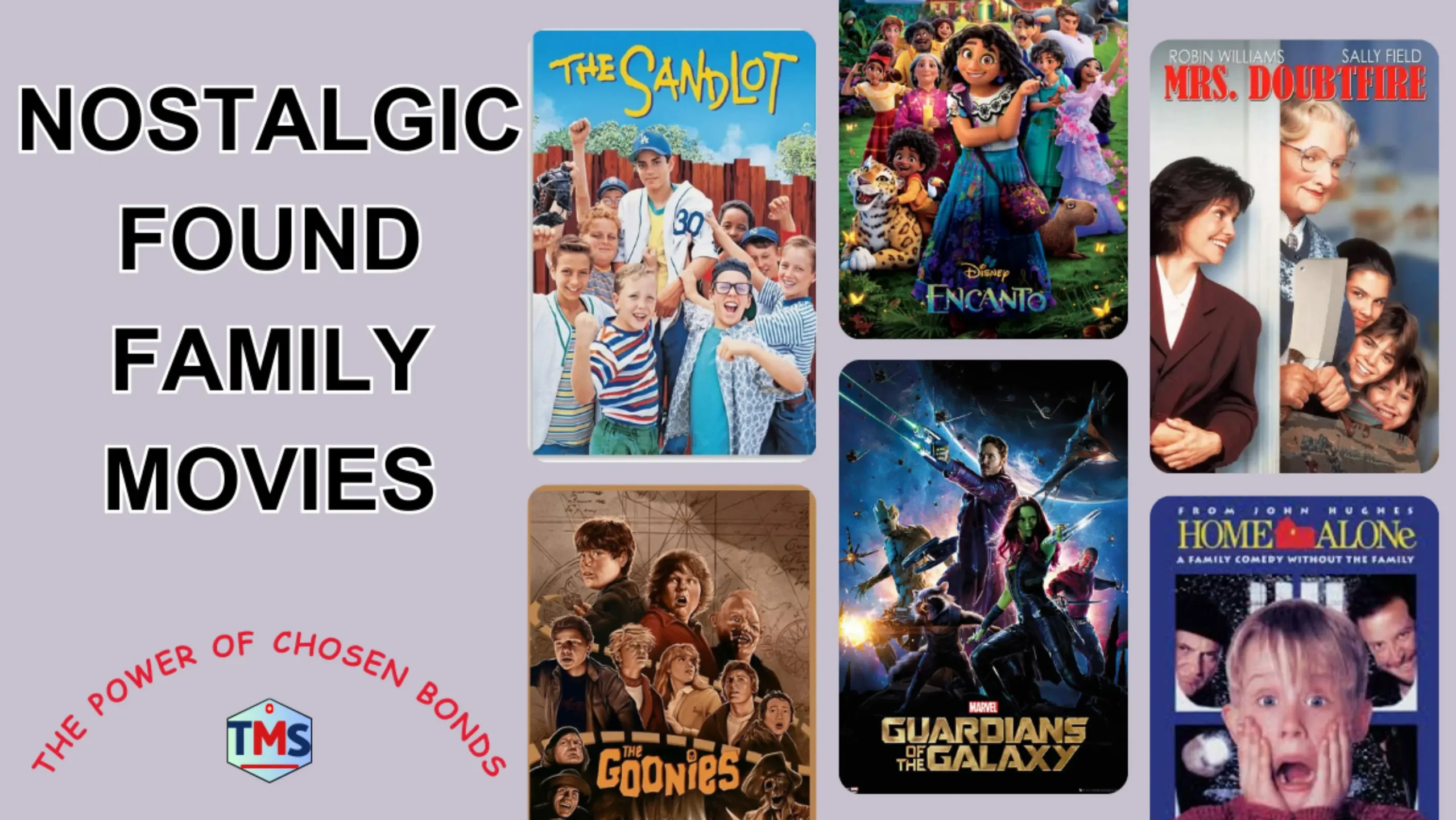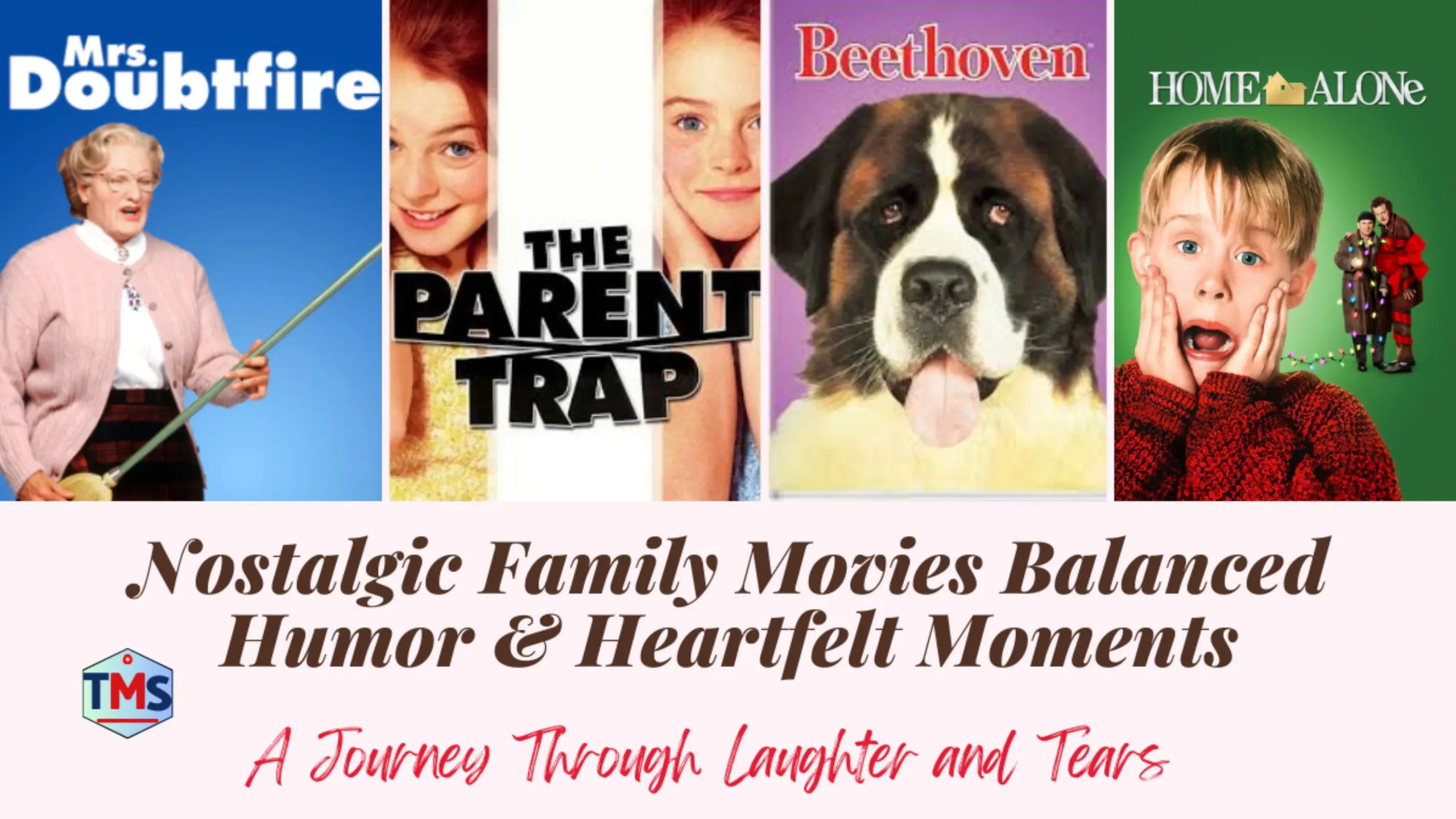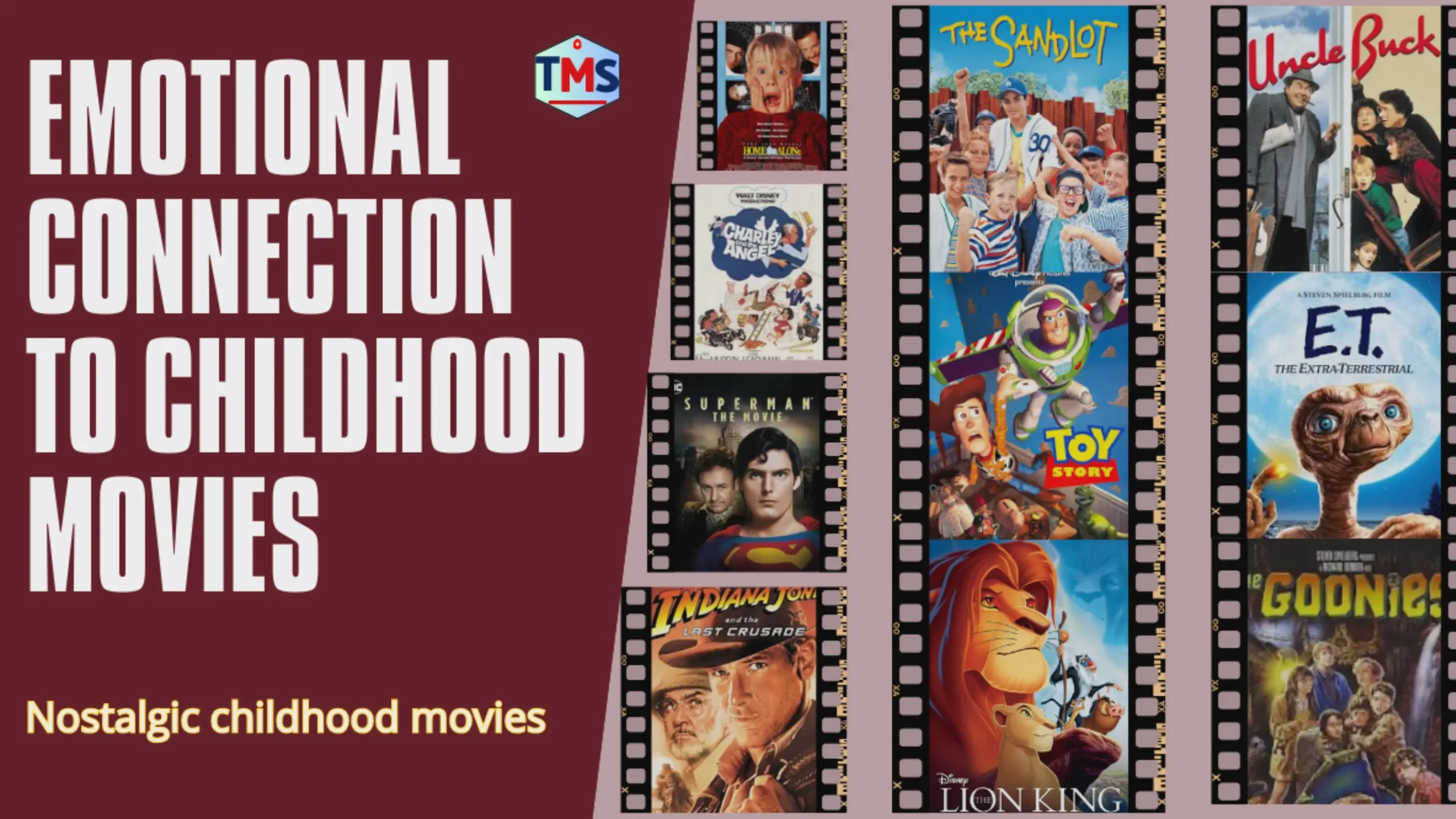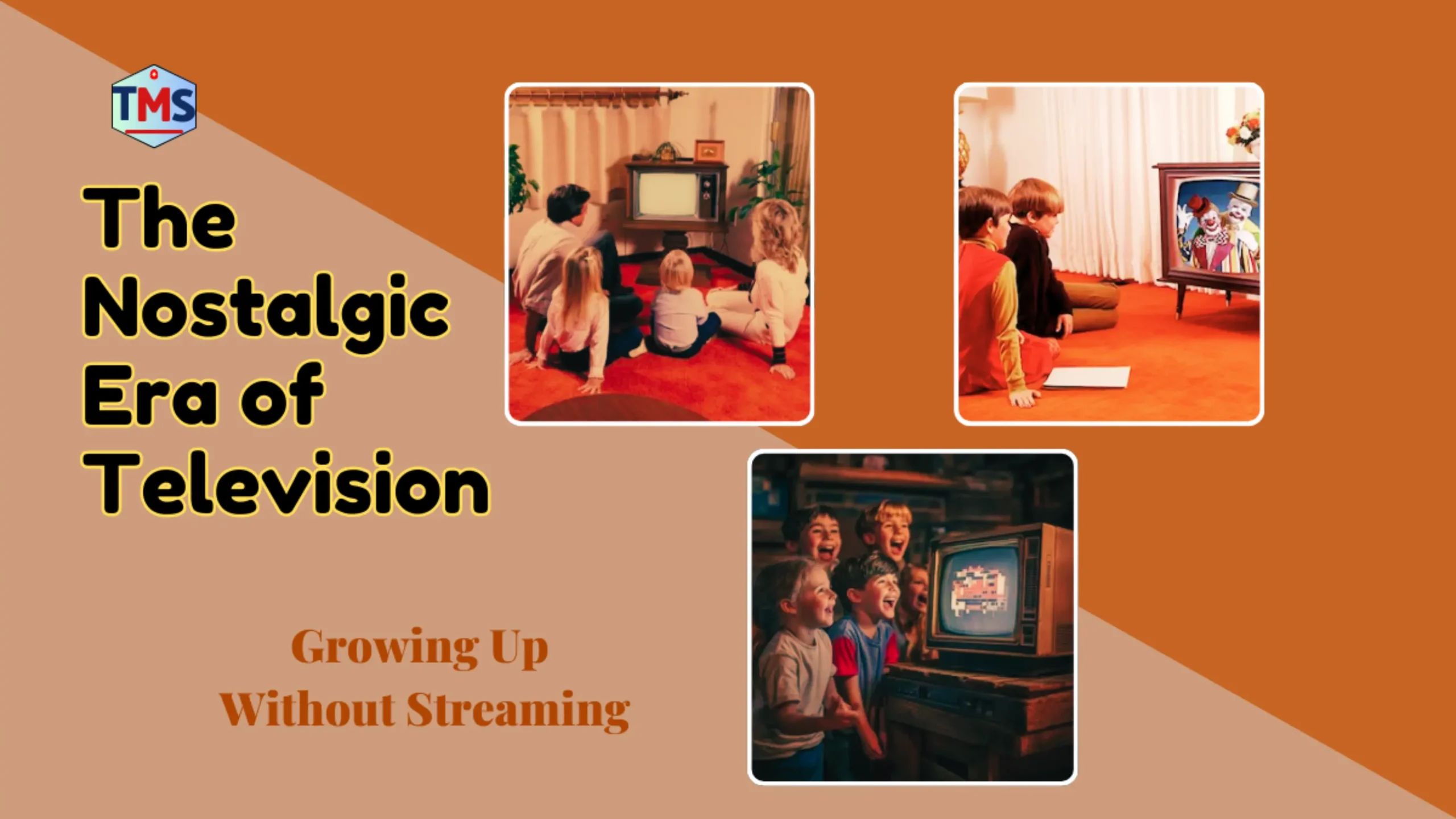The Power of Nostalgia in Fashion
Have you ever put on a pair of high-waisted mom jeans or a chunky 90s-inspired sweater and felt a sense of belonging? That’s what nostalgia in fashion is—a trend that wraps you in the comforting embrace of the past while still keeping one foot in the present. Nostalgia in fashion is the art of reviving styles, trends, or aesthetics from a bygone era, like the 70s, 80s, or early 2000s, and reimagining them with a modern twist. It’s not just about clothing; it’s about evoking memories, emotions, and cultural moments that resonate deeply.
Let’s find out why nostalgia in fashion is so powerful and why it’s tugging at hearts, especially among Gen Z.
Why We Crave Yesterday’s Styles
Our attraction to nostalgic fashion stems from a number of psychological and cultural factors. In times of uncertainty or rapid change, looking back can provide a sense of comfort and stability. Vintage styles often represent periods we romanticize – the perceived simplicity of the 1950s, the carefree nature of the 1960s, or the bold experimentation of the 1980s.
There’s also an element of authenticity that draws us to nostalgic fashion. In our digital age of fast fashion and mass production, vintage clothing feels unique and real. They have stories, craftsmanship, and a sense of permanence that’s very different from today’s disposable fashion culture. When you wear an authentic blazer from the 1970s, you’re not just wearing a piece of clothing – you’re wearing a piece of history.
Fashion’s Nostalgia Cycle
Fashion runs on roughly 20-year cycles, meaning styles from two decades ago often seem new and fresh again. This isn’t a coincidence – it’s that sweet moment when something feels so familiar as to be comforting, but so distant as to seem new. Those who lived through these trends in childhood or adolescence are now adults with purchasing power and influence, while younger generations are discovering these styles with fresh eyes.
Take the current obsession with ’90s and early 2000s fashion. Millennials who grew up in this era are now reminiscing about their youth, while Generation Z is discovering these trends without the burden of seeing them firsthand. This creates a perfect environment for nostalgic fashion to thrive.
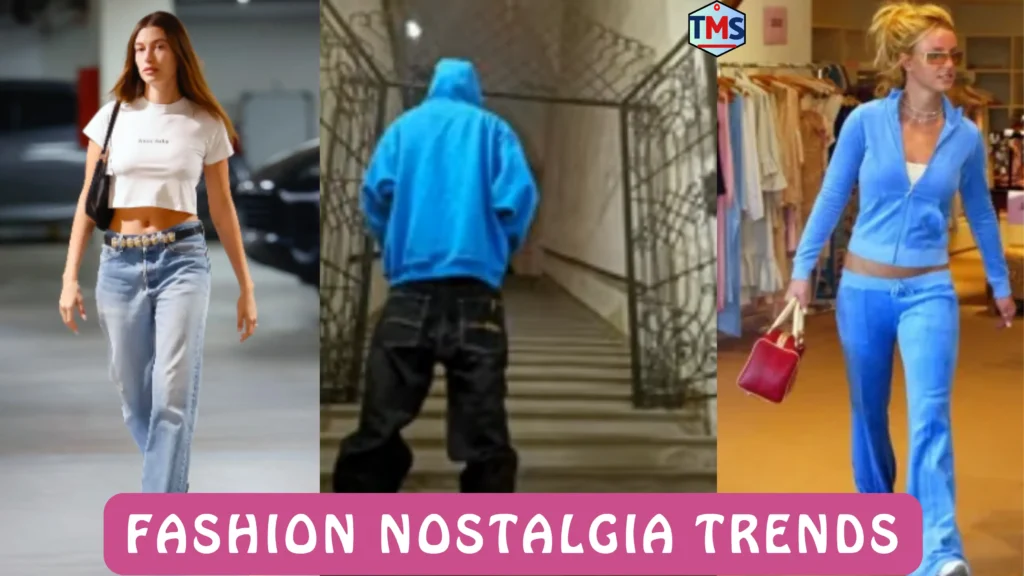
The Sustainable Side of Nostalgic Fashion
One of the most appealing aspects of nostalgia in fashion today is its association with sustainability values. Choosing vintage, thrifted, or nostalgia-inspired clothing symbolizes a conscious decision to stay away from the environmental impact of fast fashion. When you buy a vintage leather jacket instead of new, you are not only making a style statement, but an environmental one as well.
This sustainability aspect has given nostalgic fashion credibility and purpose beyond just aesthetics. It allows fashion lovers to fulfill their preferred style preferences while also feeling good about the impact their decisions have on the earth.
Modern Expressions of Fashion Nostalgia
Today’s nostalgic fashion isn’t about outright replication – it’s about reinterpretation and modern adaptation. Designers and fashionistas take inspiration from bygone eras and blend them with contemporary sensibilities. A 1960s shift dress can be reinvented with sustainable fabrics, or a 1980s power shoulder can be softened a little for today’s workplace.
Social media has accelerated the nostalgia cycle, with platforms like Instagram and TikTok showcasing vintage finds and styling tips. The democratization of fashion through these platforms means that anyone can become a curator of nostalgia, drawing inspiration from their thrift store finds and vintage outfits.
Embracing Your Fashion Nostalgia
Understanding nostalgia in fashion can help you develop a more considered and personal style. Consider which eras appeal to you and why. Are you drawn to the elegant elegance of the 1940s? The bohemian freedom of the 1970s? The bold experimentation of the 1980s?
Remember that nostalgic fashion is most effective when it feels authentic to you. Don’t feel pressured to adopt every trend that comes out – instead, focus on elements that really match your personality and lifestyle.
Fashion nostalgia reminds us that style is cyclical, personal, and deeply connected to our emotions and memories. It’s a beautiful way to create something unique for the present while honoring the past. After all, today’s trends will become tomorrow’s nostalgia, continuing fashion’s endless, fascinating cycle of nostalgia and new inventions.
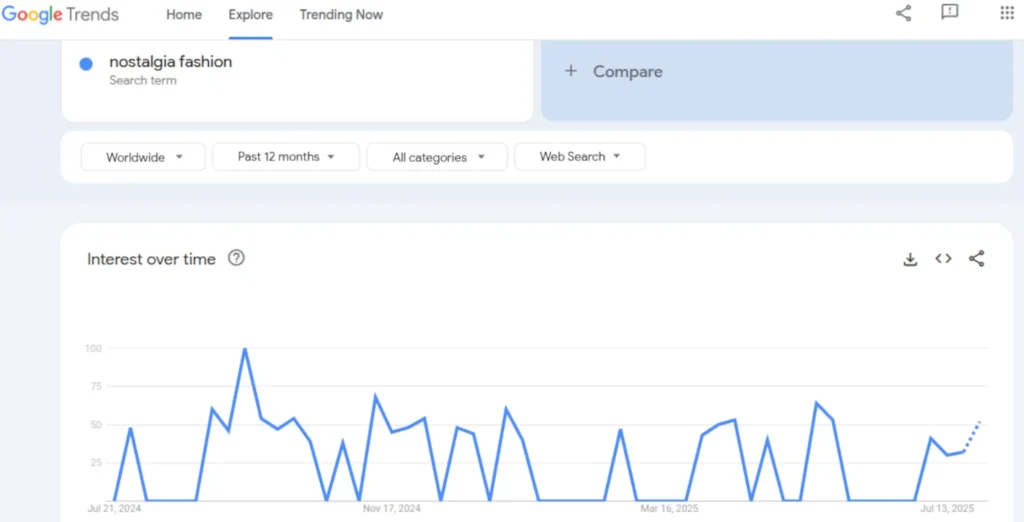
Research Compilation: Nostalgia in Fashion
- Academic Backing: Research shows that the nostalgia aesthetic on TikTok is similar to that identified in recent academic studies, in which scholars have observed a shift in cultural trends toward emotions, perceptions, sensations, and bodily experience in fashion.
- Strong Market Statistics: The statistics are impressive: the resale market could reach $36 billion by 2025 and the clothing resale market is projected to reach $80 billion in the US by 2030. Even more striking is that the secondhand apparel market is growing rapidly, with projections showing it will reach nearly $125 billion by 2034, and grow at a compound annual growth rate (CAGR) of 11.1% since 2024.
- Consumer Psychology: Research confirms that nostalgia is positively associated with a sense of meaning in life and that the relationship between nostalgia and increased meaning in life is mediated by feelings of social connectedness.
- Current Trends: In 2025, nostalgia is making a powerful comeback, with retro influences dominating fashion, driven by a desire for comfort and simplicity, consumers are turning to past decades for inspiration.
Podcast Spotify: Robin Barrett Wilson
Frequently Asked Questions (FAQs)
Why is fashion so nostalgic?
Fashion is nostalgic because it taps into collective memories and emotional connections to bygone eras, and provides comfort in uncertain times. Media such as Stranger Things and social platforms such as TikTok promote retro trends, while brands capitalize on reissuing iconic styles to boost sales.
What does nostalgia wear?
Nostalgia wear includes iconic styles from past decades, such as 70s flared jeans, 80s shoulder pads, 90s grunge flannels, or Y2K low-rise jeans and metallics. These clothes, often sourced from secondhand shops or reissued by brands, evoke memories of specific cultural moments.
Why is Gen Z obsessed with vintage?
Gen Z loves vintage fashion for its uniqueness, sustainability, and nostalgic appeal. Thrifting and upcycling are in line with their eco-conscious values, while the 90s and Y2K aesthetics popular on TikTok and Instagram give them the opportunity to express individuality through retro styles.
What does fashionably nostalgic mean?
Fashionably nostalgic means styling vintage or retro-inspired clothing in a modern and trendy way. It involves combining elements like bold prints from the 80s or minimalist dresses from the 90s with current accessories to create a look that’s both sentimental and stylish.
What to do with nostalgic clothing?
With nostalgic clothes, you can wear vintage clothes as statement items, transform them into modern designs, or sell them on platforms like Depop or eBay. Donating or swapping at thrift events also promotes sustainability while sharing retro vibes.
What is the 20 year trend cycle?
The 20-year trend cycle is the pattern where fashion trends from two decades ago emerge fresh for today’s audience. For example, Y2K fashion (early 2000s) returned in the 2020s, driven by nostalgia and Gen Z’s love for retro aesthetics.
How does nostalgia shape identity?
Nostalgia shapes identity in fashion by giving people the opportunity to express their personal or cultural memories through retro styles like 90s grunge or 80s punk. Wearing nostalgic clothing connects people to their past, subcultures, or formative experiences, thereby promoting self-expression.

